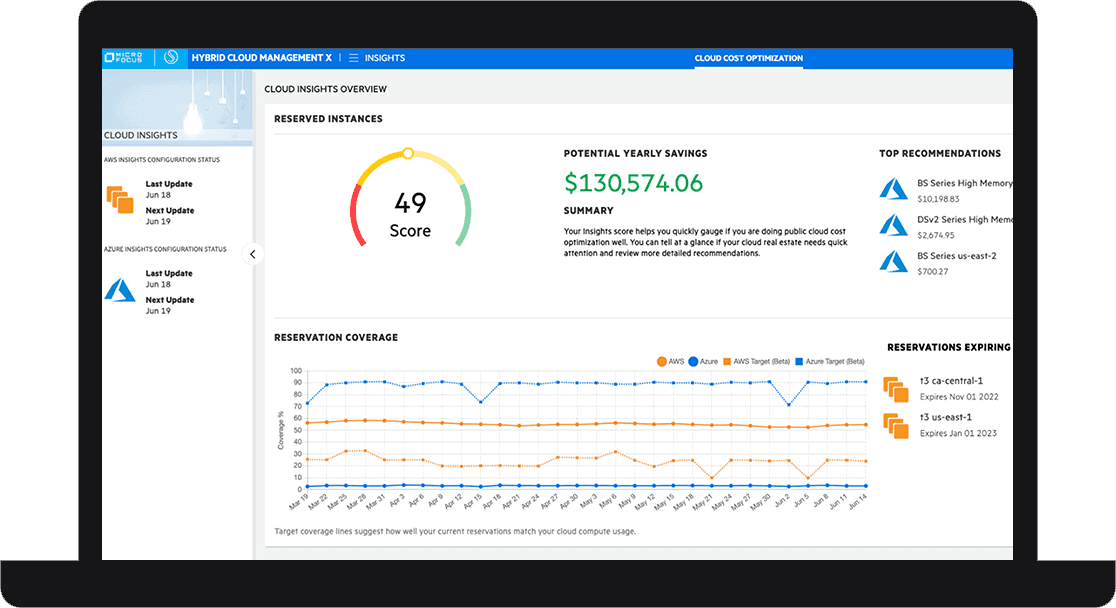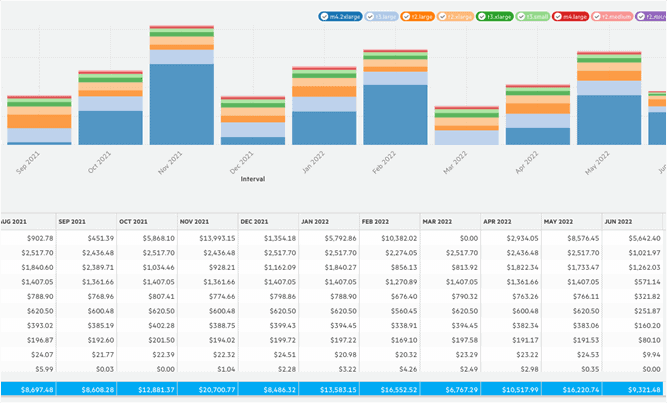You’ve probably heard that one of the benefits of cloud is cost savings. This is true to a certain extent, but with the huge adoption of cloud resources, there is also a lot of unnecessary spending. This phenomenon is also known as ‘cloud waste’, something that has led to high cloud spending within several organisations. With FinOps, there is a discipline that offers an answer. It is about making money and saving money.
Cloud computing has now been around for more than 15 years. The way we currently know it managed to become popular initially with the launch of AWS. Microsoft Azure, Google Cloud, Oracle Cloud and IBM Cloud also provided additional popularity. Each cloud has its own advantages and disadvantages. Collectively, the providers at least managed to get organisations excited by the benefits around agility, provisioning and elasticity. Developers and the business can make considerable progress.
The enthusiasm has led to considerable adoption. Consequently, organisations currently often use multiple clouds. However, in doing so, they may have forgotten to build in certain safeguards. This makes certain spending on the cloud unnecessary. According to data from software company Flexera, the percentage of this ‘cloud waste’ would be 32. Going by that figure, companies therefore have the potential to make significant cost savings.
FinOps for optimisation
Several IT vendors have jumped on this development. Consequently, a new discipline called FinOps has emerged in the market. This discipline uses best practices and technologies to optimise and manage spending on the cloud. To make this a serious business and market, there is now a genuine FinOps Foundation, which in turn has the Linux Foundation and Cloud Native Computing Foundation behind it.

This FinOps Foundation has also produced a definition. “FinOps is an evolving cloud financial management discipline and cultural practice that enables organizations to get maximum business value by helping engineering, finance, technology and business teams to collaborate on data-driven spending decisions”, according to the FinOps Foundation. In doing so, the FinOps Foundation emphasizes that the discipline is as much about making money as it is about saving money. It’s about maximizing business value from the cloud by supporting collaborations among directors, engineers, FinOps practitioners, operations, finance and procurement. That part of FinOps was not entirely clear at first, leading analysts to criticize the thinking. As a result, the discipline considers angles to make the right optimization and management choices. Cross-functional teams work together to achieve faster product delivery while achieving greater financial control and predictability.
In particular, FinOps focuses on three issues for this purpose. First, efficiency, which means companies are looking at how to use cloud resources correctly and get the most value out of every euro they spend. Second is finance optimisation, which looks at getting more business done with less. Finally, there is constant room for improvement by learning from mistakes and successes.
Story continues after the box
Example of ‘cloud waste’
The ‘cloud waste’ discussed in this article occurs in different ways. To make it a little easier to understand, we will give a real-life example. In the example, we will assume that we are dealing with a large organisation with hundreds of applications. Many of those applications will be needed for day-to-day operations. Think about a CRM system, used daily by sales and marketing staff. This kind of software actually needs to be available at all times. For that, the organisation uses the necessary cloud resources.
However, there are also applications that are used once in a while. It could be specific accounting software that is used once a quarter for a hefty administrative job. If your organisation keeps such applications running continuously, then a lot of money is actually wasted on something that is unnecessary. After all, it is constantly using resources.
In an organisation with hundreds of applications, several applications can be used periodically in such a way. Ideally, however, you only run them when they are actually needed. To do this, IT would have to analyse the large application landscape to identify such usage. After that, enabling and disabling could be arranged. However, that would be a lot of manual work. Automation offers a solution. It can identify and switch workloads off and on when cloud resources do not need to be used.
Achieving transparency
So FinOps focuses very much on optimising costs. To get some insight into exactly how that works, we decided to talk to Travis Greene, Director of ITOM Product Marketing at Micro Focus. Micro Focus is one of the parties offering a FinOps solution, as part of Hybrid Cloud Management X (HCMX) solution. Indeed, according to Micro Focus, FinOps functions best when deployed as part of a centralised hybrid cloud management solution. Indeed, such a Hybrid Cloud Management solution realises total visibility in every cloud of a company.
We previously wrote an article about the HCMX solution. If you want to know more about that product, you can read our article again.
Micro Focus can therefore use the solution to look at your organisation’s cloud usage, so to speak. To do so, it has the knowledge about and integrates with every major cloud an organisation might use. It then plots the usage of all clouds on a central dashboard. Are there any areas where your organisation is throwing money away? Micro Focus HCMX FinOps Express makes that transparent.
Building in safeguards for compliance
Greene cites that this is the global endeavour, with companies looking for areas to make optimisations. In Greene’s view, there are also gains to be made at the same time by building in safeguards for preventable high spend. “This can be done by preventing security and compliance breaches before they happen. Then you have less to figure out on your monthly expense report where the high costs are coming from.”
Micro Focus thus offers ‘compliance guardrails’ for this purpose. This allows organisations to set rules on the maximum amount to spend, for example. Greene cites a situation that happened at Micro Focus itself, where such compliance guardrails could have come in handy. At the time, however, they were not yet available. “We employ thousands of developers at Micro Focus. They use cloud infrastructure for testing and deployment. One of the developers tried to deploy a Jenkins instance. Unfortunately, not all policies and security measures had been implemented. The server was hacked and used for bitcoin mining. We got a bill for that server of more than $100,000 than originally thought and we had to spend days figuring out where the cost came from.”
Orchestration engine
As far as Greene is concerned, another component not to be missed for making a FinOps solution practical is an orchestration engine. This allows companies to automate workflows. Greene describes it as a no-code platform, because it allows actions to be controlled visually. Suppose the provisioning of infrastructure has been arranged, you also want to take certain steps in production. For instance, the IT manager may deem it necessary to monitor the infrastructure and ensure that backups happen in a timely manner. Regular reshaping of storage capacity is also desired. All tasks after bringing a workload into production should not be forgotten.
That’s where the orchestration engine comes in. It thus supports the Operations team by implementing automation in a simple way. It allows them to work more efficiently, which can save on costs. But, perhaps more importantly, there is a staffing shortage and Operations barely gets to the requests. That pain can be alleviated somewhat by automation.
Discovery and dependency mapping
Finally, Greene notes that for cost management, discovery and dependency mapping are also important. “In cloud environments, developments are moving very fast. That’s the whole point: we want agility, to deploy things quickly. That’s why you need robust cloud discovery, as well as an on-premises tool. After all, many companies have a hybrid architecture. And they might be running some infrastructure in the cloud that crosses storage and processing power on-premises. Therefore, you need not only a tool for discovery, but also one that makes connections. How does the application talk to the database or web server? That dependency mapping is very important for troubleshooting and change management.”
Investing to save costs
Ultimately, FinOps as a discipline has been around for several years now, but Greene says it is a much hotter topic than before. In the market he is responsible for, he used to get more questions on the management plane of hybrid cloud. Nowadays, many of the questions are about the financial aspect.
If we then look at why organisations should make an investment in such a product, it is striking that providers of FinOps solutions have an attractive licensing model. On the market, there are products that charge two to three per cent of a company’s cloud expenditure as a licence fee. Other vendors, including Micro Focus, have a licensing structure with tiers based on cloud expenditure. In terms of cost, this can be compared to the percentage system. So if you assume the 32 per cent in ‘cloud waste’, those investments would quickly pay off. And with that, the cloud spending ends up at a manageable level again.

